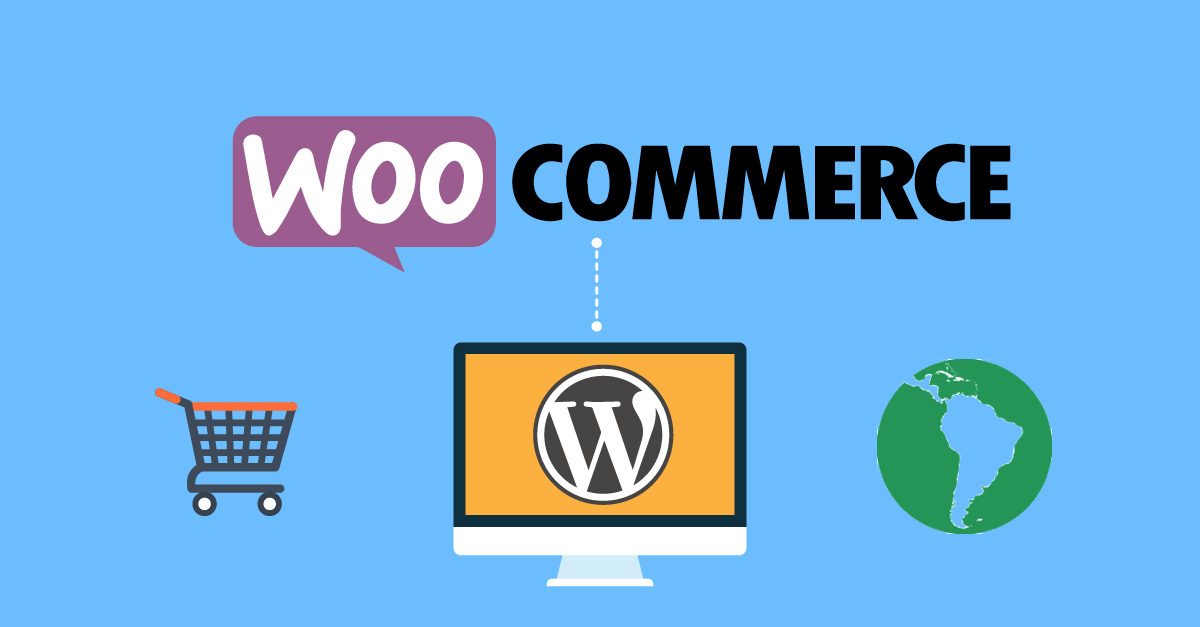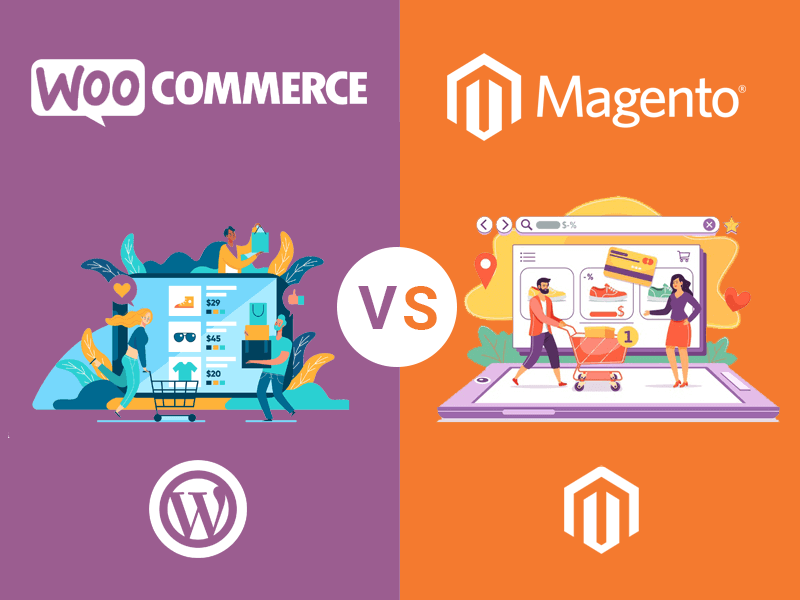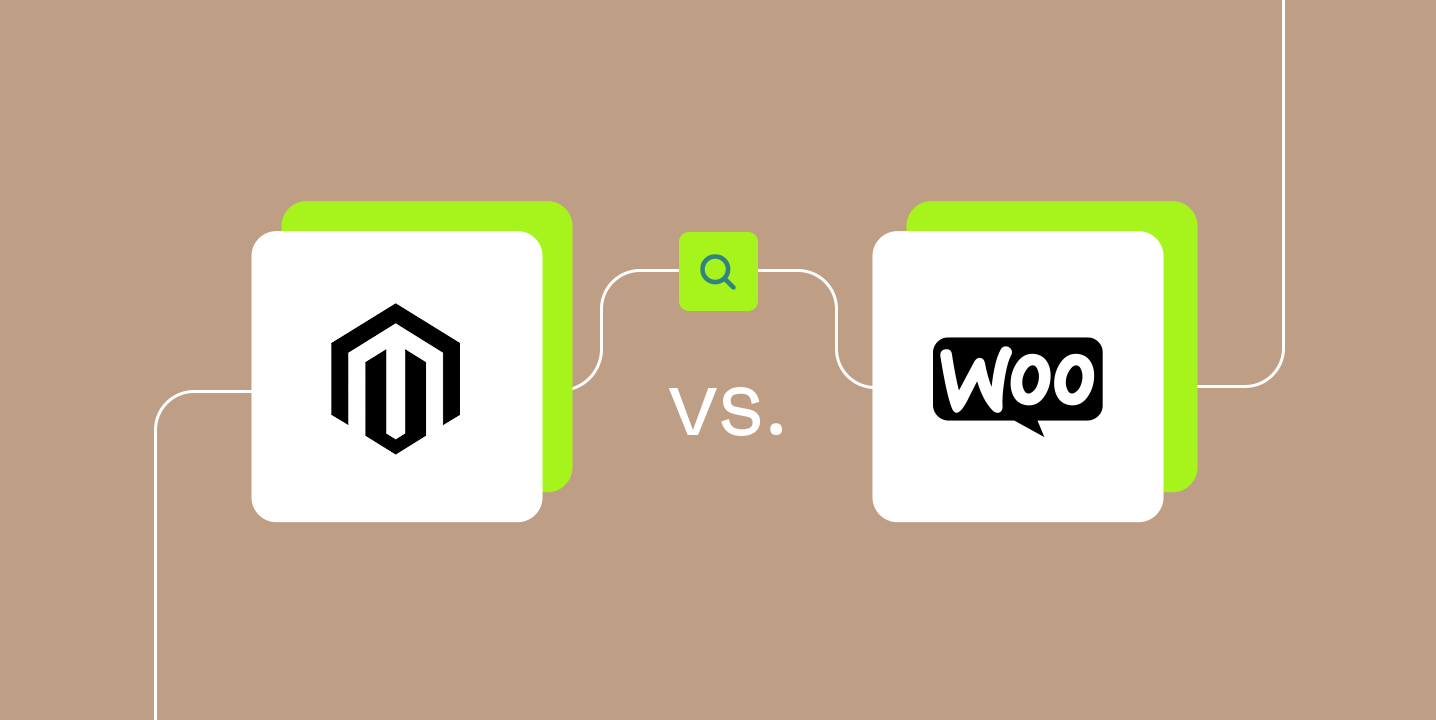WooCommerce vs Magento: The Ultimate Showdown for eCommerce Domination (2024 Update)
The world of eCommerce is experiencing explosive growth! As an entrepreneur or business owner, choosing the right platform to build your online store is a cornerstone for success. Two leading contenders emerge: WooCommerce, a powerful WordPress plugin, and Magento, a standalone eCommerce platform. Which option dominates for your business requirements? This ultimate showdown – WooCommerce vs Magento – will equip you to make an informed decision.
What is WooCommerce?
WooCommerce is a free, open-source plugin specifically designed for building online stores using WordPress. It essentially transforms your WordPress website into a fully functional eCommerce platform, allowing you to sell physical or digital products, manage inventory, process payments, and track orders.

What is Magento?
Magento is a powerful, open-source eCommerce platform specifically designed for building and managing online stores. Unlike WooCommerce, which is a plugin for WordPress, Magento is a standalone platform requiring its own web hosting. This translates to greater control, flexibility, and scalability – ideal for businesses with a large and complex product range or those anticipating significant growth.

Head-to-Head Feature Breakdown: WooCommerce vs Magento
Ease of Use & Learning Curve:
For those new to the eCommerce game, WooCommerce is a dream come true. Its user-friendly interface integrates seamlessly with WordPress, making it a breeze to set up and manage your store, especially if you’re already familiar with the WordPress ecosystem. With a drag-and-drop editor and intuitive functionalities, you can have your online store up and running in no time. Magento, on the other hand, boasts robust functionalities but comes with a steeper learning curve. Its extensive features and configuration options can be overwhelming for beginners, and technical knowledge is often recommended to navigate its intricacies.
Product Management & Scalability:
When it comes to managing a smaller product range, WooCommerce offers excellent flexibility. You can easily add, edit, and categorize your products, and its intuitive interface makes managing inventory straightforward. However, its scalability can be limited for businesses with a vast inventory or complex product variations. Here, Magento takes the crown. Its robust product management features can handle a high volume of products with intricate variations, such as size, color, and material. Additionally, Magento offers advanced features like product bundles, configurable products, and group pricing, making it ideal for large-scale businesses with complex product offerings.
Customization & Design Flexibility:
WooCommerce empowers you to design your dream store and unleash your creative spirit! With a vast array of themes and plugins available in the WordPress marketplace, you can create a unique and visually appealing storefront that reflects your brand identity. Whether you prefer a minimalist aesthetic or a feature-rich design, there’s a theme or plugin combination to suit your needs. Magento offers a high level of customization as well, allowing you to tailor the look and feel of your store to match your brand. However, advanced design changes might require developer expertise to delve into the core coding of the platform.
Pricing & Cost Considerations:
WooCommerce is the cost-effective champion. There are minimal upfront costs (besides potentially paid themes and plugins). You can leverage the free version of WordPress as the foundation, and there are numerous free and freemium themes and plugins available to get you started. This makes WooCommerce an attractive option for entrepreneurs on a budget. Magento offers various pricing models, including self-hosted and cloud-based options. While there’s a free open-source version (Magento Open Source), it requires significant technical expertise to set up and maintain. The more robust features often come with a price tag, and you might need to factor in additional development resources, which can add to the overall cost.
Security & Updates:
Security is paramount in the eCommerce world, where you’ll be entrusted with sensitive customer data. While WooCommerce offers a secure foundation, the responsibility lies partly with you to choose reputable developers for themes and plugins. Regularly updating these plugins and the WordPress core is crucial to maintain optimal security. Magento boasts robust security features out of the box, but ongoing maintenance and updates are crucial for optimal protection. This might require developer support, adding to maintenance costs.
Choosing the Right Platform: WooCommerce vs Magento
So, which platform emerges victorious in the WooCommerce vs Magento battle. The response varies according to your particular business objectives and available resources!
- Ideal for Beginners & Smaller Stores: WooCommerce is your perfect partner if you’re starting an online store, have a limited product range, and value ease of use. Its user-friendly interface, extensive community support, and cost-effectiveness make it a compelling choice for budding entrepreneurs.
- Ideal for Large-Scale Businesses & Complex Products: Magento is your champion if you require a robust platform to manage a vast inventory, complex product variations, and anticipate significant growth. Its scalability, advanced features, and focus on security make it a powerful solution for established businesses.
Additional Considerations Beyond the Core Features
While the core features are crucial, don’t forget to consider these additional factors when making your final decision:
- Payment Gateway Options: Ensure the platform integrates seamlessly with your preferred payment gateways to offer a smooth checkout experience for your customers. Popular options include PayPal, Stripe, and Authorize.net.
- Shipping Integrations: Choose a platform that offers smooth integration with your chosen shipping providers, such as USPS, FedEx, or DHL. This will streamline your order fulfillment process.
- Marketing & SEO Capabilities: Evaluate the platform’s built-in marketing and SEO tools to support your online store’s growth. Look for features like email marketing integration, coupon codes, and SEO-friendly product pages to enhance your online store’s visibility and attract organic traffic. While both WooCommerce and Magento offer some basic functionalities, you might need additional plugins or extensions to unlock a comprehensive marketing and SEO toolkit.
Conclusion
The battle between WooCommerce vs Magento isn’t about a single victor. The “best” platform depends on your unique business goals and resources. If you’re a beginner or have a smaller store, WooCommerce’s user-friendly approach and cost-effectiveness might be the ideal fit. For established businesses with a vast inventory and complex product structures, Magento’s scalability and robust features offer a powerful solution.
Still unsure which platform is the perfect fit? OnextDigital can help! We offer a range of services designed to empower your eCommerce journey, regardless of the platform you choose: Web Development Service, UX/UI Design Service, and CRM & Auto Marketing Implementation Service. Let OnextDigital be your partner in eCommerce success! Contact us today for a free consultation and discover how we can help you leverage the power of WooCommerce, Magento, or other platforms to build a thriving online store.






